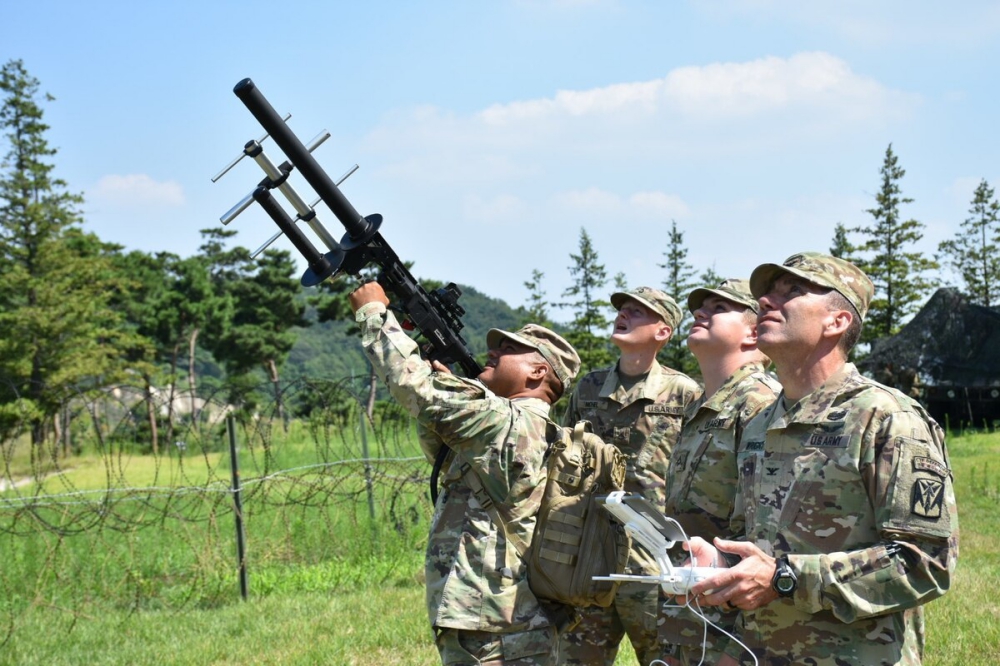The Pentagon has identified a lack of institutionalised training when it comes to defeating drone threats and is developing a common regimen across the joint force, according to an official with a new office dedicated to countering small unmanned aircraft systems.
The gap was identified during an assessment completed earlier this year and led by the director of operational test and evaluation.
“There are currently no joint linkages or commonality to counter-UAS training across the department,”
said Lt. Col. David Morgan, who is with the Joint Counter-Small Unmanned Aircraft Systems Office’s requirements and capabilities division, said during an Oct. 30 C-sUAS capability virtual industry open house.
“Every service is executing service-specific training. The average soldier, airman or Marine lacks adequate counter-UAS training. It’s not fully embedded in the [program of instruction] from basic training onward,” he said, adding that training is often completed downrange without sustainment or reinforcement efforts.
Creating a training element toward countering small drones is one part of the Pentagon’s larger effort to develop enduring C-sUAS capabilities that keep pace with the evolution of UAV threats. The Joint Counter-Small Unmanned Aircraft Systems Office, or JCO, was stood up earlier this year and has already selected interim systems to fill the gap while it develops capabilities for future threats.
The office has also developed a new joint C-sUAS strategy. The JCO took insights gathered from the DOT&E assessment and is developing a joint institutional training concept with “a fourfold vision,” Morgan said.
The office will develop a “common core C-UAS program of instruction,” publish joint tactics, techniques and procedures, and update existing doctrine to refine and improve educational baselines across the force, according to Morgan. The program will also create basic identification and employment principals for all counter-drone systems at every level of the joint training enterprise.
Troops will receive more training opportunities to gain an advanced understanding of the joint command-and-control architectures in the employment guidelines as well as the tactics, techniques and procedures.
The concept will also identify, on a quarterly and semiannual basis, lessons learned and distribute those to the joint war fighters, Morgan said.
The JCO plans to establish a C-sUAS academy at Fort Sill, Oklahoma, that will use instruction previously developed at Yuma Proving Ground, Arizona, while establishing a new core, joint C-SUAS program of instruction.
The academy is intended to provide basic-level instruction to every joint war fighter and begin the process of codifying “the doctrinal and training underpinnings” to improve countering UAS, Morgan said.
The new schoolhouse is already embarking on several initiatives to develop a tiered educational construct and expects to reach initial operational capability in the early part of fiscal 2024, Morgan said. The academy will reach full operational capability in FY25.
While the academy takes shape, the JCO will continue to use Yuma Proving Ground under the oversight of the Fires Center of Excellence to bridge the training strategy.
The JCO is updating the current program of instruction efforts at Yuma that address the lessons learned and feedback from those who have completed the course there and from downrange, Morgan said. The update course will include more hands-on instruction with the interim counter-drone capabilities.
Photo: Marion Jo Nederhoed / US Army
Source: Defense News

